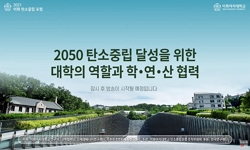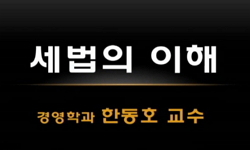CCU는 화석연료 연소 및 산업 공정에서 배출되는 이산화탄소를 활용 가능한 원료나 제품으로 전환하는 기술이며, 탄소중립 목표 달성을 위한 중요한 수단이자 자원 순환을 동시에 실현할 수 ...
http://chineseinput.net/에서 pinyin(병음)방식으로 중국어를 변환할 수 있습니다.
변환된 중국어를 복사하여 사용하시면 됩니다.
- 中文 을 입력하시려면 zhongwen을 입력하시고 space를누르시면됩니다.
- 北京 을 입력하시려면 beijing을 입력하시고 space를 누르시면 됩니다.

이산화탄소 포집 및 활용(CCU) 현황과 법제도적 과제 = Current Status and Legal Considerations of Carbon Capture and Utilization (CCU)
한글로보기부가정보
국문 초록 (Abstract)
CCU는 화석연료 연소 및 산업 공정에서 배출되는 이산화탄소를 활용 가능한 원료나 제품으로 전환하는 기술이며, 탄소중립 목표 달성을 위한 중요한 수단이자 자원 순환을 동시에 실현할 수 있는 기술로 주목받고 있다. 미국, EU 등 기술 선도국에서는 일부 CCU 제품의 상용화도 이루어지고 있으며, CCU 시장 확대를 촉진하는 법제도가 마련되고 있다. 이에 본 연구는 미국과 EU의 CCU 법제의 주요 내용 및 CCU 기술 발전을 위해 채택한 상이한 접근방식에 대해 비교 분석하고 한국의 법정책적 과제를 고찰하였다. 미국은 45Q 택스 크레딧, 인플레이션감축법 등을 통한 강력한 세제 혜택과 직접적인 재정 지원을 통해 CCU 산업을 활성화하는 반면, EU는 배출권거래제 지침, 택소노미 규정, 재생에너지 지침 등을 활용하여 적극적이고 다각적인 정책적 접근을 취하고 있는 것으로 분석된다. 특히 최근 EU 배출권거래제 지침에서는 CCU 제품의 영구성 요건에 대해 구체적으로 규정하였다. 한국은 CCU를 탄소중립 실현을 위한 주요 감축수단으로 채택하고 CCU 기술 로드맵을 수립하였으며, 2024년에는 「이산화탄소 포집・수송・저장 및 활용에 관한 법률」이 제정되었다. 그러나 CCU 제품의 이산화탄소 감축 기여도를 산정할 구체적 기준을 포함하여 여전히 해결해야 할 과제들이 남아 있다. 본 논문은 CCU 기술의 현황, 특징, 중요성 및 한계 등을 살펴보고, CCU 기술 확산 및 제품 상용화를 촉진하기 위한 법제도적 방향 및 정책적 지원 방안을 제안하였다.
다국어 초록 (Multilingual Abstract)
Carbon Capture and Utilization (CCU) is a technology that converts carbon dioxide (CO2) emitted from fossil fuel combustion and industrial processes into usable raw materials or products. It is recognized as a crucial tool for achieving carbon neutral...
Carbon Capture and Utilization (CCU) is a technology that converts carbon dioxide (CO2) emitted from fossil fuel combustion and industrial processes into usable raw materials or products. It is recognized as a crucial tool for achieving carbon neutrality while simultaneously promoting resource circulation. Leading countries, such as the United States (US) and the European Union (EU), have commercialized certain CCU-based products and established legal frameworks to accelerate market expansion. This study compares and analyzes the CCU-related laws and policies in the US and the EU, focusing on their distinct approaches to fostering CCU technology development, and examines legal and policy challenges in South Korea. The US promotes CCU deployment through strong financial incentives, including the 45Q tax credit and the Inflation Reduction Act (IRA), which provide substantial tax benefits and direct financial support. In contrast, the EU adopts a multifaceted policy approach by integrating CCU into various regulatory instruments, such as the Emissions Trading System (ETS) Directive, the Taxonomy Regulation, and the Renewable Energy Directive (RED). Notably, recent revisions to the EU ETS Directive have introduced specific criteria for assessing the permanence of CO2 stored in CCU products. South Korea has identified CCU as a key strategy for achieving carbon neutrality and has established a national CCU technology roadmap. In 2024, South Korea enacted the Act on Carbon Dioxide Capture, Transport, Storage, and Utilization (CCUS Act). However, several challenges remain, including the need for clear criteria to assess the carbon reduction contributions of CCU products. This paper examines the current status, characteristics, significance, and limitations of CCU technology and proposes legal and policy measures to facilitate its widespread adoption and commercialization.
동일학술지(권/호) 다른 논문
-
- 연세법학회
- 박근웅
- 2025
- KCI등재
-
- 연세법학회
- 최선웅
- 2025
- KCI등재
-
개인정보 보호법과 가명정보 및 가명처리에 관한 헌법적 검토 - 헌법재판소 2023. 10. 26. 선고 2020헌마1476 결정을 중심으로 -
- 연세법학회
- 김정수
- 2025
- KCI등재
-
- 연세법학회
- 손인혁
- 2025
- KCI등재




 KISS
KISS






